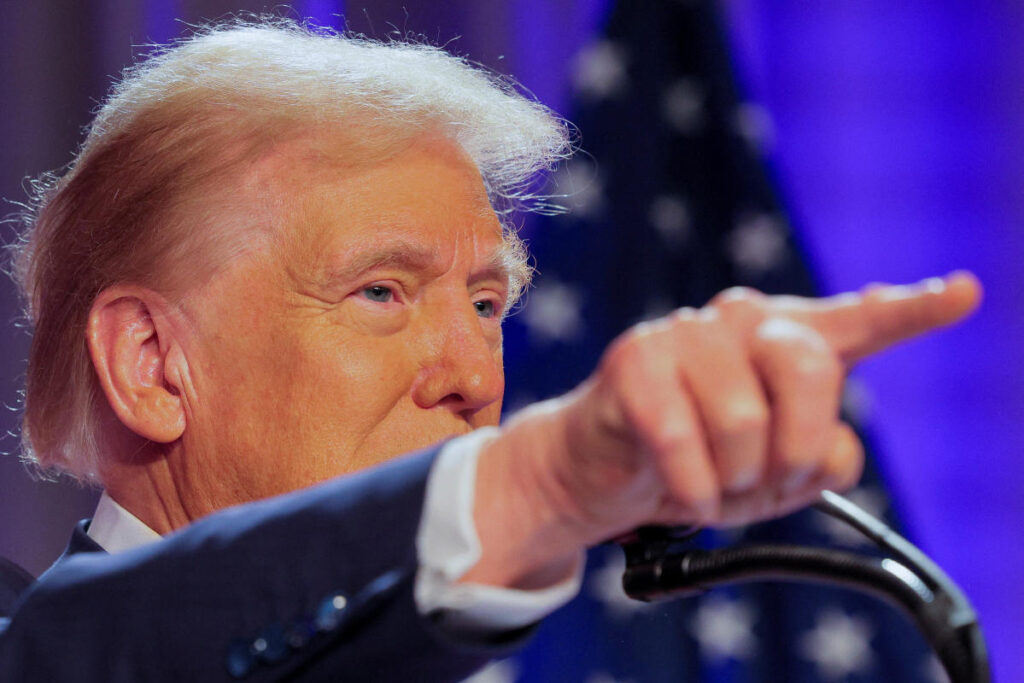In October, consumer prices increased as anticipated, indicating a potential moderation in inflation levels. However, economic experts warn that this positive trend could be short-lived if President Donald Trump implements his proposed tariffs, which range from 10% to 20% on all imports and a significant 60% on Chinese goods. According to calculations from the Peterson Institute for International Economics (PIIE), these tariffs could impose an average financial burden of $2,600 annually on American households. Moreover, the Yale Budget Lab’s analysis suggests that considering the larger economic impacts—such as international retaliations—this figure could soar to $7,600 per household. Experts like Kimberly Clausing from PIIE highlight that when tariffs are imposed, the costs of domestic goods typically rise in tandem due to new pricing structures.
Clausing projected that the tariffs proposed by Trump could lead to consumer cost increases amounting to at least 1.8% of GDP, not accounting for further consequences stemming from retaliatory actions or reductions in international competitiveness. This impact potentially exceeds the repercussions from tariffs enacted during Trump’s first administration by a substantial margin. Karen Karniol-Tambour, co-chief investment officer at Bridgewater Associates, echoed this sentiment, noting that the scale and context of the proposed tariffs would result in significant inflation, especially in today’s economic environment compared to 2016.
The import tariffs could drastically affect everyday goods within the U.S. market, as imports contribute to over 15% of the national GDP. The National Retail Federation (NRF) estimates that the proposed taxes could diminish American consumers’ spending power by between $46 billion and $78 billion across various product categories. For example, everyday products such as apparel could see price increases; jeans that currently cost $80 might surge by $10-$16, and a $100 coat could become $21 more expensive. This burden will disproportionately affect low-income families, who spend a greater portion of their earnings on basic goods, particularly apparel.
The anticipated tariffs would not only raise prices for consumers but could also generate significant revenue for U.S. manufacturers. However, imports would face tariff increases ranging from 56.5% to as much as 97.4%, depending on the specific circumstances. For instance, the cost of a $50 tricycle might increase by $28 under these tariffs. The economic implications of such significant tariff rates are complex and multifaceted, complicating the ability of economists to provide precise forecasts regarding their ultimate impact on consumer prices.
The potential effects of the proposed tariffs will extend to a wide array of household appliances. If manufacturers pass the increased costs of imports onto consumers, the price of essential items, such as basic refrigerators and dishwashers, could rise sharply. For example, the average price for a basic refrigerator could escalate from $665 to approximately $852. Clausing emphasized that the broader implications of these tariff-induced price changes are challenging to quantify, as domestic manufacturers may raise their pricing, further inflating costs across various sectors, including food and beverage industries, by capitalizing on higher import prices.
In conclusion, while the current trend indicates a moderation of inflation with rising consumer prices aligning with expectations, the proposed tariffs from Donald Trump could lead to significant economic repercussions. The predicted cost increases for households, particularly among low-income Americans, underscore the risks associated with such a trade policy. The interplay between rising import costs, domestic pricing strategies, and potential retaliatory measures from other countries will create a complex economic landscape that could impose further strain on consumers and the broader economy. As businesses and households adapt to these potential changes, the ramifications of tariff policies could shape economic debates in the coming months and years.

